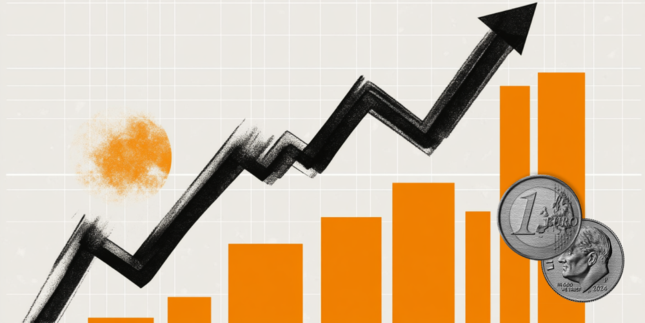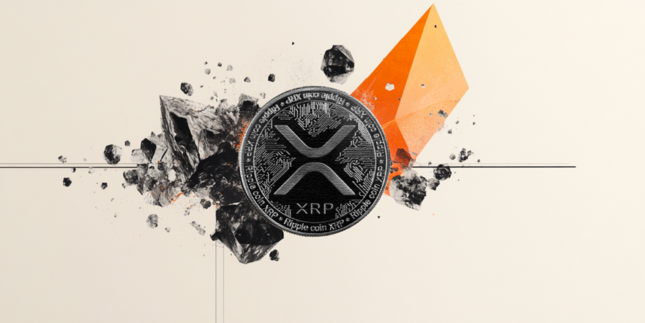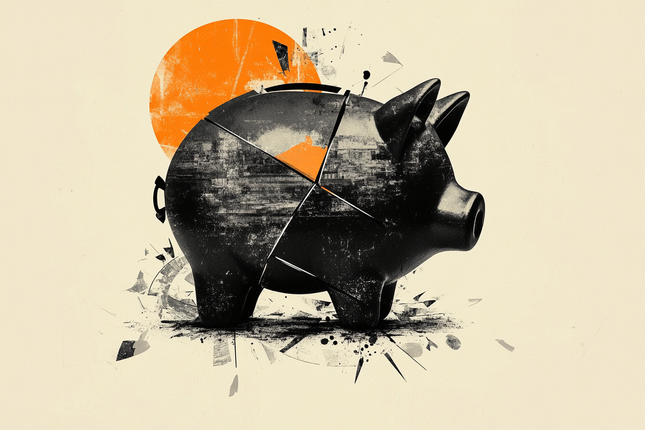The gold bull is back. After trending downward for more than four years, gold prices have broken out to the upside with a gain of more than 20% off their December lows.
Gold’s crossing of the 20% threshold even caused the financial media to take notice. “Gold is now in a bull market,” reported CNNMoney (March 7, 2016).
Is the path now clear for gold prices to march on toward new all-time highs? Perhaps.
But gold bulls can be temperamental and unpredictable. Sometimes they disappoint, as was the case with multiple short-lived bull markets in the 1980s and 1990s. Sometimes they keep running and running until they go parabolic.
So far all we've seen is a gold rally turn into an "official" bull market by virtue of prices advancing 20%. It's an encouraging sign of strength; but it's not in itself confirmation of a larger trend in force. A major bull market is characterized by a series of higher highs and higher lows over a period of months to years.
So far, gold has rallied around 22% from a low over a period of a few weeks. This rate of ascent isn't sustainable in perpetuity. A healthy bull market ebbs and flows – it takes two steps forward and one step back, as It were.
That's why a price correction after a 20%+ advance would be normal and healthy. If it's a major bull market, then prices will go on to make a higher high, followed by a higher low.
Recall that the last big mania in gold took place from mid 1976 to January 1980. Prices surged more than 700% over that time period. Yet there were still corrections along the way – until the final, parabolic blow-off move. Another major gold bull market didn't return until 2001-2011.
Yet from 1980 to 2001, there were multiple rallies of greater than 20%. For example, from April to September 1980, gold prices rallied more than 40%. But from there, they turned around to make lower lows.
In the summer of 1982, gold prices spiked 65% – from $300 to $500 an ounce. But by 1985 prices had fallen back below $300. The gold market hit rock bottom in 1999 at just above $250. Prices rallied 30% in the second half of 1999 before sliding back down to test those ultimate lows one last time in 2001.
The point is that when it comes to precious metals markets, an official bull market designation doesn't necessarily mean the larger bear market is over. Investors must consider other technical and fundamental evidence that a major bull market is in force.
Major bull markets typically begin when pessimism reaches an extreme. That seems to have occurred last December when the Federal Reserve moved to raise interest rates. At the time, the Wall Street Journal reported that “a shift to higher rates is expected to hurt gold.” Meanwhile, an enormous speculative short (bearish) position had built up on gold and silver in the futures markets.
Everyone was looking for precious metals to keep falling heading into 2016. The January 4, 2016 issue of Barron's contained an article titled "Gold Likely to Stay Tarnished." It quoted an analyst prediction of $800/oz gold and concluded, "Beaten-down gold is unlikely to tempt many investors in 2016."
Oh, really?
The financial establishment’s bearish consensus on gold has thus far proven to be dead wrong. Demand for the yellow metal is surging in 2016 along with the spot price. Assets in gold price-tracking exchange-traded funds have swelled so rapidly that one such instrument – the iShares Gold Trust (IAU) – took the unprecedented step of suspending the creation of new shares. The fund’s managers said they were overwhelmed by $1.4 billion in new inflows since the start of the year.
Investors in gold ETFs are left to wonder not only whether their shares are being fully backed by physical gold at all times; but also whether a fund manager might decide to suspend redemptions in the event of a selling surge of similar magnitude as the recent buying surge.
Investors in gold and silver coins are left to wonder whether dealers may run out of inventory of popular products such as American Eagles. The U.S. Mint in recent months has been hit with record demand for Silver Eagles. At current rates of buying, the Mint alone will require more tonnes of silver this year than is mined in the U.S.! And that does not even count the substantial amount of silver rounds and bars that private mints manufacture.
This fact leads us to what ultimately must underpin a major bull market in precious metals: favorable fundamentals of supply and demand. Gold and silver markets can rise or fall by 20% over any given period based purely on technical factors. But if the precious metals are going to launch into a multi-year bull market that takes prices to new record highs, it will be because of strong physical demand coupled with tightness in supply.
The wild card going forward is the monetary backdrop. Never before have central bankers pursued negative interest rate policies en masse. From Europe to Japan and beyond, some $6 trillion in global assets are stuck in negative-yielding bonds. The U.S. could be the next big country to go negative.
Negative interest rates might make physical precious metals (which obviously don't pay interest) more attractive than ever before as financial assets. But historically what has mattered and what will likely continue to matter most for precious metals is not whether nominal interest rates are falling or rising. It's what's happening with real (after inflation) rates on bonds and cash. The more people fear losing to inflation by holding bonds and cash, the more the more they will seek gold and silver for protection.
So far in 2016, silver hasn't performed as impressively as gold. Silver's continued underperformance is one of the few remaining negatives on which precious metals naysayers can hang their hats. In a major bull market for precious metals, silver should outperform. Gold is analogous to a blue-chip stock in the Dow Jones Industrials. Silver is akin to a small-cap technology stock – more thinly traded, more volatile, more potential for explosive gains.
Silver lagged behind gold in the early stages of the bull market that began in 2001. But silver put the exclamation mark on the sector top that occurred in 2011 with a dramatic spike to nearly $50/oz. The next great precious metals bull market could give us a triple-digit price handle on silver and a doubling (or more) of gold's former all-time high.
Fasten your seatbelt!
Money Metals Exchange and its staff do not act as personal investment advisors for any specific individual. Nor do we advocate the purchase or sale of any regulated security listed on any exchange for any specific individual. Readers and customers should be aware that, although our track record is excellent, investment markets have inherent risks and there can be no guarantee of future profits. Likewise, our past performance does not assure the same future. You are responsible for your investment decisions, and they should be made in consultation with your own advisors. By purchasing through Money Metals, you understand our company not responsible for any losses caused by your investment decisions, nor do we have any claim to any market gains you may enjoy. This Website is provided “as is,” and Money Metals disclaims all warranties (express or implied) and any and all responsibility or liability for the accuracy, legality, reliability, or availability of any content on the Website.
Recommended Content
Editors’ Picks

EUR/USD stabilizes above 1.1350 on Easter Friday
EUR/USD enters a consolidation phase above 1.1350 on Friday as the trading action remains subdued, with major markets remaining closed in observance of the Easter Holiday. On Thursday, the European Central Bank (ECB) announced it cut key rates by 25 bps, as expected.

GBP/USD fluctuates below 1.3300, looks to post weekly gains
After setting a new multi-month high near 1.3300 earlier in the week, GBP/USD trades in a narrow band at around 1.32700 on Friday and remains on track to end the week in positive territory. Markets turn quiet on Friday as trading conditions thin out on Easter Holiday.

Gold ends week with impressive gains above $3,300
Gold retreated slightly from the all-time high it touched at $3,357 early Thursday but still gained more than 2% for the week after settling at $3,327. The uncertainty surrounding US-China trade relations caused markets to adopt a cautious stance, boosting safe-haven demand for Gold.

How SEC-Ripple case and ETF prospects could shape XRP’s future
Ripple consolidated above the pivotal $2.00 level while trading at $2.05 at the time of writing on Friday, reflecting neutral sentiment across the crypto market.

Future-proofing portfolios: A playbook for tariff and recession risks
It does seem like we will be talking tariffs for a while. And if tariffs stay — in some shape or form — even after negotiations, we’ll likely be talking about recession too. Higher input costs, persistent inflation, and tighter monetary policy are already weighing on global growth.

The Best brokers to trade EUR/USD
SPONSORED Discover the top brokers for trading EUR/USD in 2025. Our list features brokers with competitive spreads, fast execution, and powerful platforms. Whether you're a beginner or an expert, find the right partner to navigate the dynamic Forex market.